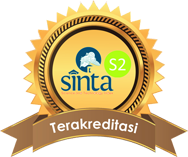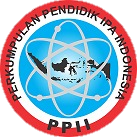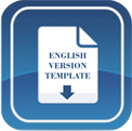DEVELOPMENT OF WEB-BASED CHEMICAL LEARNING MEDIA IN COLOID SYSTEM TOPIC USING WORDPRESS
DOI:
https://doi.org/10.15575/jtk.v5i1.7425Keywords:
learning media, colloidal system, web, CMS wordpressAbstract
The study aimed to develop web-based learning media on colloidal system topic using wordpress CMS. It comes from challenges to make an attractive learning system for students. The research method ADDIE model developed by Dick and Carrey. The research instrument was questionaires. This learning media had been validated by media experts, material experts, chemistry educators and field trials. The result showed that the learning media is valid and feasible to be used in teaching and learning activities on system colloid lessons. It is proven based on the average score which is converted in to good and very good categories according to the ideal assessment criteria. While the result of small group trial showed the average scores of 19 and 19.4 for aspects of learning material and 35.5 and 38.1 for aspects of appearance and operation are both categorized as a good category.
References
Barron, B., & Darling-Hammond, L. (2008). Teaching for Meaningful Learning: A Review of Research on Inquiry-Based and Cooperative Learning. Book Excerpt. In George Lucas Educational Foundation. ERIC.
Branch, R. M. (2009). Instructional Design: The ADDIE Approach. USA: Springer science+Business Media.
Burrmann, N. J., & Moore, J. W. (2013). Development of a Web-Based, Student-Centered Stereochemistry Tutorial. Journal of Chemical Education, 90(12), 1622–1625.
Degeng, M. D. K. (2016). Pengaruh Learning Control dalam Pembelajaran Menggunakan Media Web terhadap Hasil Belajar Pengetahuan Prosedural. 23(2002), 90–95.
Ebbing, D., & Gammon, S. D. (2016). General chemistry. Cengage Learning.
Eli, R. N., & Sari, S. (2018). Pembelajaran Sistem Koloid Melalui Media Animasi Untuk Meningkatkan Aktiitas Dan Hasil Belajar Siswa. Jurnal Tadris Kimiya, 3(2), 135–144.
Fadillah, A. (2017). Pengembangan Bahan Ajar Kimia Berbasis Web dengan HTML 5 Pada Materi Pokok Bahasan Bentuk Molekul di SMA-IT Thariq Bin Ziyad. Tesis, FMIPA: Universitas Negeri Jakarta.
Hayati, D. K., Sutrisno, S., & Lukman, A. (2014). Pengembangan Kerangka Kerja TPACK pada Materi Koloid untuk Meningkatkan Aktivitas Pembelajaran dalam Mencapai HOTS Siswa. Edu-Sains: Jurnal Pendidikan Matematika Dan Ilmu Pengetahuan Alam, 3(1).
Kristanti, Y., Subiki, S., & Handayani, R. (2016). Model Pembelajaran Berbasis Proyek (Project Based Learning Model) Pada Pembelajaran Fisika Disma. Jurnal Pembelajaran Fisika Universitas Jember, 5(2), 116319.
Kurniawan, D., Riyana, C., & Rusman. (2015). Pembelajaran Berbasis Teknologi Informasi dan Komunikasi. Jakarta: Rajawali Pers.
Persada, A. R. (2017). Peningkatan Hasil Belajar Matematika Melalui Pengembangan Bahan Ajar Berbasis Website. Eduma : Mathematics Education Learning and Teaching, 6(1), 62.
Rahman, S. (2018). Buku Sakti SEO Wordpress dan Joomla. Jakarta: Elex Media Komputindo.
Saluky, S. (2016). Pengembangan Bahan Ajar Matematika Berbasis Web Dengan Menggunakan Wordpress. Eduma : Mathematics Education Learning and Teaching, 5(1), 80–90.
Setyadi, D., & Qohar, A. (2017). Pengembangan Media Pembelajaran Matematika Berbasis Web Pada Materi Barisan Dan Deret. Kreano, Jurnal Matematika Kreatif-Inovatif, 8(1), 1–7.
Sunarya, Y. (2012). Kimia Dasar 2 (1st ed.). Bandung: Yrama Widya.
Suyanti, R. D., & Purba, D. M. (2017). The Implementation of Discovery Learning Model Based on Lesson Study to In crease Student ’ s Achievement i n Colloid.
Widiyaningtyas, T., & Widiatmoko, A. (2014). Media Pembelajaran Berbasis Web Pada Mata Pelajaran Kimia. Jurnal TEKNO, 21 maret, 47–51.
Widoyoko, E. P. (2013). Evaluasi Program Pembelajaran Panduan Praktis bagi Pendidik dan Calon Pendidik (5th ed.). Yogyakarta: Pustaka Pelajar.
Downloads
Published
Issue
Section
License
Authors who publish with this journal agree to the following terms:
- Authors retain copyright and grant the journal right of first publication with the work simultaneously licensed under a  Creative Commons Attribution-ShareAlike that allows others to share the work with an acknowledgement of the work's authorship and initial publication in this journal.
- Authors are able to enter into separate, additional contractual arrangements for the non-exclusive distribution of the journal's published version of the work (e.g., post it to an institutional repository or publish it in a book), with an acknowledgement of its initial publication in this journal.
- Authors are permitted and encouraged to post their work online (e.g., in institutional repositories or on their website) prior to and during the submission process, as it can lead to productive exchanges, as well as earlier and greater citation of published work (See The Effect of Open Access).








